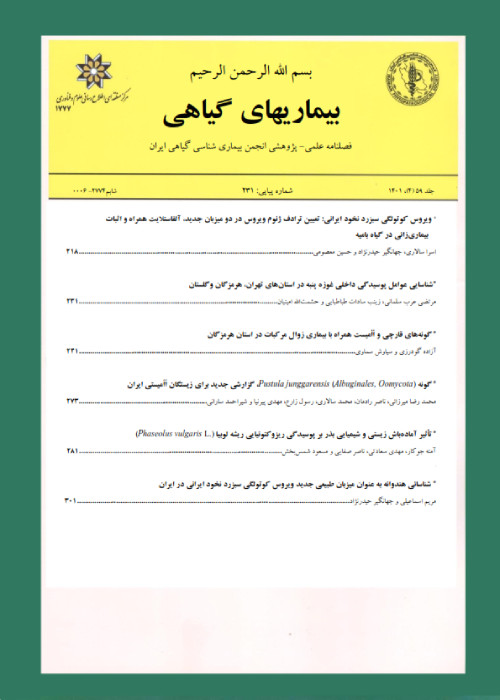First report of Alternaria alternata causing leaf spot on Sambucus ebulus in Iran
Medicinal plants have undoubtedly been considered by human beings since ancient times. Sambucus ebulus (Caprifoliaceae) is one of the best known medicinal herbs since ancient times and is native to Southern and Central Europe, Northwest Africa, and Southwest Asia (especially Northern Iran) (Westwood 1985; Jabbari et al. 2017). It plays an important role in traditional medicine in many countries from different regions of the world (Jabbari et al. 2017). During the summer of 2014, leaf spots have been observed on S. ebulus plants in Gilan and Mazandaran provinces, Iran. Symptoms on infected leaves appeared as brown necrotic spots that surrounded by distinct dark brown haloes and were circular to irregularly in shape. During the summer of 2014 and 2015, sampling was done in Gilan and Mazandaran provinces from symptomatic leaves of S. ebulus and the fungus was isolated on 2% water agar (WA 2%) and potato dextrose agar (PDA). Pure fungal cultures were obtained by picking up a single spore on PDA. For morphological identification, the isolates were cultured on Potato Carrot Agar medium (PCA) and incubated at 25 °C under cool-white fluorescent with 16 h dark, 8 h light photoperiod for 14 days (Simmons 2007). The seven-days-old colonies on PCA were dark olive to brown in color and 70 mm in diameter. Primary conidiophores were often simple, reached to 70 µm in length and produced numerous conidia in a simple long chain. The conidia were 8–12 × 20–45 µm in size, egg or club shaped and contained 3-5 transverse and 1-2 longitudinal septa (Fig. 1a-c).According to macro- and micro morphological characters, all recovered isolated were identified as Alternaria tenuissima which was later synonymized under the name of A. alternata by Woudenberg et al. (2015). PCR amplification of the nuclear ITS-rDNA and RNA polymerase II second largest subunit regions was performed using primers ITS1/ITS4 and RPB2–5F2/fRPB2–7cR respectively (White et al. 1990, Sung et al. 2007; Liu et al. 1999). The sequence of NG1 isolate was deposited into the GenBank with the accession numbers MK212914 for ITS-rDNA and MK262741 for rpb2 region and living cultures of this strain were deposited in the Agriculture Biotechnology Research Institute of Iran culture collection (ABRII 10119). Phylogenetic estimates were evaluated using the Maximum Parsimony Analyses in MEGA 6.0 (Tamura et al. 2013). The results of phylogenetic study showed, NG1 isolate was clustered in a well-supported clade (100%) including sec. Alternaria and related to Alternaria alternate isolates (Fig. 2). Pathogenicity test was performed in greenhouse condition on the detached leaves taken from healthy S. ebulus. Ten healthy leaves per isolates were cleaned with sterile water and were inoculated with conidial suspension containing 1 × 106 conidia/mL using the spray method. The control leaves were inoculated with distilled water. Leaf spots similar to the original symptoms were observed on all inoculated leaves after 5 days since inoculation and the fungus re-isolated from leaf lesions (Fig. 1e-g). Also, no symptoms were seen in controls.
- حق عضویت دریافتی صرف حمایت از نشریات عضو و نگهداری، تکمیل و توسعه مگیران میشود.
- پرداخت حق اشتراک و دانلود مقالات اجازه بازنشر آن در سایر رسانههای چاپی و دیجیتال را به کاربر نمیدهد.



